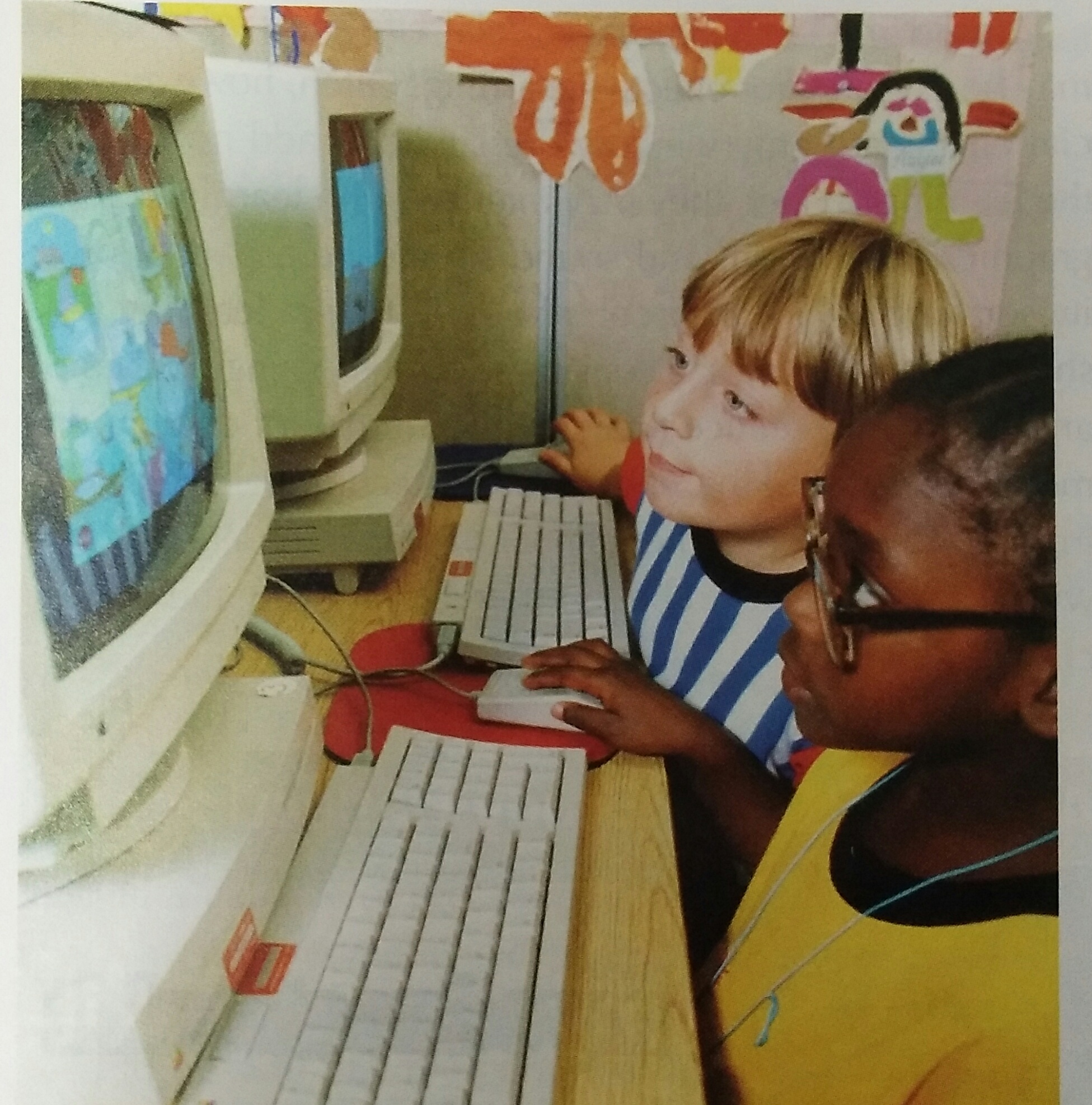Unit 7-知识点一:计算机
 |
|
1.Cumputers (计算机) |
|
1.1 Roles of computers in learning
|
|
(1) As an object of instruction Computers have become pervasive in education and training. Most learners have access to and are influenced by computer-based instruction. When a learner is studying computer programming, the computer and the associated software (programs and applications) are the objects of instruction. |
|
(2) As a tool: writing, calculating, retrieving information |
|
As a writing tool As a calculating tool
As a retrieving information tool |
|
图7.1 计算机在学习中发挥工具的作用 |
|
(3) As an instructional device
|
|
|
|
图7.2 CBE 、 CAI 、 CMI 的关系图 |
|
(4) As a means of teaching logical thinking Thecomputer should be an “object to think with,”not a dispenser of information. Example : Using LOGO,a procedural language that was designed for learners,students can learn adout the complexity of mathematics within their daily lives.Children can build and test theories about mathematics. |
|
1.2 Advantages and Limitations of Computers (1) Advantages
|
|
(2) Limitations
|
|
1.3 Integration the computer into the curriculum 与课程整合 The ultimate value of technology in education and training depends on how fully computers are integrated into the curriculum. Instructors need a framework for using computer technology that covers a variety of learning styles and accommodates varied teaching methods. Most important, results need to be measurable against a clear set of goals and objectives—the second step in the ASSURE model. In classrooms where computer technology is integrated successfully, students use it with the same ease with which they use it with the same ease with which they use books, maps, pencils, and pens. Intechnology-rich classromms students and teachers engage in problem solving, cultivate creativity, collaborate globally, and discover the value of lifelong learning.
|
|
1.4 Integration learning systems 集成学习系统 The Integration learning systems is a networked set of computer workstations equipped withsoftware that provides a particular set of sequential lessons.Students work through these lessons as prescribed by the built-in management system,which tracks individual student progress. 集成化的学习系统指的是由计算机工作站组成的网络,计算机上安装有相应的软件,可以提供一套教学内容。学生按照系统内部的管理系统的引导来学习这些课程。系统可以跟踪记录每个学习者的进步。 |
|
(1) Advantages
|
|
(2) Limitations
|
|
(3) Integration 集成学习系统主要用于基础数学与语言艺术的教学中。基础较薄弱的学生可以在家通过该系统补习。 集成化学习系统未来最有前景的应用,可能是把集成化学习系统中的课程作为整个学校教学计划的一部分,对学校内的合作教学、主题单元、学生和家长参与制定教学目标等教学活动提供支持,并且可以按照本地教职人员的设计,制定教学内容。 |
|
1.5 Software Selection 软件选择 There are several factors associated with selecting software:foremost is to examine the software within the context of the learning outcomes ;other factors that should be considered content ,formats, ease of operation, design, and completeness of the package ; the software you select must be designed to run on your available operating system and must function properly with your specific hardware configuration. Selection criteria:
|
|
1.6 Computer Hardware 计算机硬件 (1)Basic Components(基本原件) Regardless of the size of the computer or complexity of the system,computers have a number of standard components.The physical equipment that makes up the computer is referred to as the hardware.Acomputer’s specific combination of hardware components is referred to as its configuration.Thebasic hardware components are diagrammed in Figure7.3 |
|
|
|
图7.3 计算机基本原件 |
|
|
1.7 Computer Facilities 计算机设备 (1)The One-Computer Classroom一台计算机的教室 A typical printer for use with a computer.The one-computer classroom, then , can be viewed as a place where you may use the computer in many ways:
|
|
(2) The multiple-computer classroom 多台机算计的教室 A computer classroom is useful when the teacher wants to present to all students simultaneously.The arrangement is helfful when the instructor is teaching studentsto use the same software simultaneously. |
|
|
|
图7.4 4 台计算机的教室 |
|
|
|
图7.5 12 台计算机的教室 |
|
(3) The Computer Laboratory 计算机实验室 Schools often place 15 to 20 computers together in a single room called a computer laboratory. |
|
|
|
图7.6 计算机实验室 |







